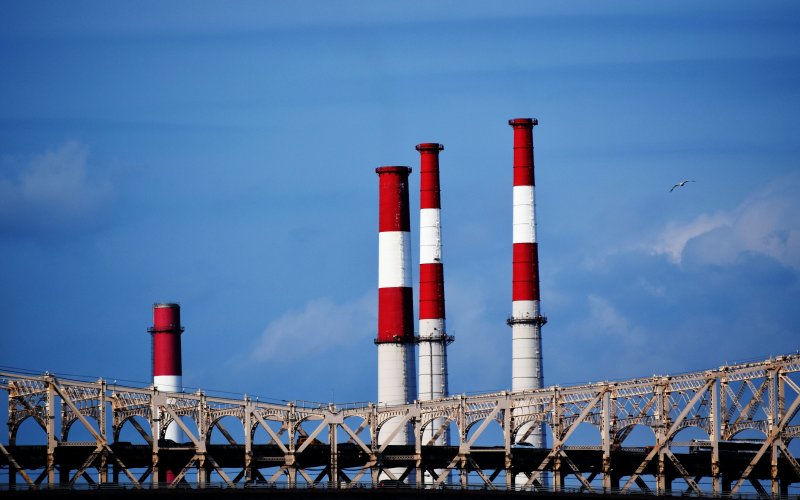Understanding Energy Policy and Climate Change

Photo credit: Chris Barbalis
As the effects of climate change have become more and more evident, the global conversation on energy policy has gotten louder and louder. Consequently, energy policy and climate change played a key role throughout the 2020 United States presidential election — in debates and on the campaign trail — as candidates stated their positions on policy and regulations regarding rising global temperatures.
Taking the opportunity to look closely at those policies, Rockefeller College adjunct professor William Saxonis led his Spring 2020 students enrolled in PAD 475/575 “Understanding Energy Policy and Climate Change: A Federal, State, and Local Government Perspective” through a semester-long project to better understand the implications. The class, comprised of undergraduate and graduate students, analyzed the policies of both parties’ 2020 presidential candidates and developed their own national climate change and energy policy positions on several key issues. After numerous dynamic class discussions, the students agreed on consensus positions on four major issues outlined below: energy related tax policy, fracking, nuclear power, and the Paris Agreement.
Energy Related Tax Policy
Saxonis’ students expressed strong support for a carbon tax as a method to discourage the use of fossil fuels and encourage technological innovation in the energy sector. With concern that the burden of a carbon tax would fall heaviest on the low-income sector, the class felt that the solution to this problem was to make the carbon tax revenue neutral with proceeds from the tax being rebated to the citizens fairly and equitably. While the concept of a carbon tax is relatively straightforward, the details can get complex. For example, what is a sensible carbon tax level? If the level is set too low it may not have the desired impact, but if it is set too high it could result in a major shock to the economy. Moreover, a high carbon tax would likely not pass Congress, given its current state. While the class did not reach an agreement on all details, the students felt a carbon tax of $30-40 per ton with regular increases over time would be a place to start.
Fracking
All and all, Saxonis’ class expressed strong opposition to fracking. The primary reason being the negative environmental and health related consequences attributed to the fracking process, such as contamination of the water supply. There was support for a federal ban on fracking among the students, but they acknowledged that it would be difficult to garner sufficient support for the legislation in Congress.
Nuclear Power
Saxonis’ class displayed a healthy skepticism regarding the safety and long-term viability of nuclear power, but did not suggest abandoning nuclear power over the short term. They recognized that about 20% of the nation’s electricity supply is generated with nuclear energy and losing this source of power, free of greenhouse gasses, would present a serious challenge. The class agreed that licenses should not be granted for new nuclear power facilities, but was open to considering emerging technologies such as small modular reactors.
Paris Agreement
The Paris Agreement represents a global commitment to fight the climate crisis. The United States was instrumental in the design and negotiation of the Paris Agreement and signed in 2015. The U.S. submitted a pledge to cut emissions by 26-28% relative to 1990 levels by 2025. In 2017, the Trump administration announced its intent to withdraw from the agreement, and did so on November 4, 2020 — a day after the U.S. presidential election. The class was strongly in favor of not withdrawing from the Paris Agreement and believed the U.S. should focus on meeting or exceeding the original emissions reduction goal.
Saxonis’ class examined these issues in the spring months leading up to the 2020 election, not knowing who would ultimately become POTUS and have the influence to implement new climate change and energy policies. With the sharp contrast between President Trump’s and President-elect Joe Biden’s view on climate change, it is clear now that the future of climate change and energy policy will look different over the next four years.
Professor Saxonis believes that the months ahead will be pivotal to the success of Biden’s bold $2 trillion climate change plan. “Some measures, such as rejoining the Paris Agreement can be achieved on day one, but other measures will require congressional approval — a heavy lift, especially if the Republicans continue to control the Senate,” said Saxonis. “We can expect to see within the administration’s first few months numerous executive orders designed to strengthen environmental regulations and address climate change. It promises to be a fascinating time — fasten your seat belts.”


